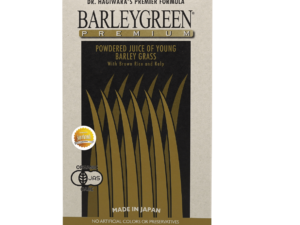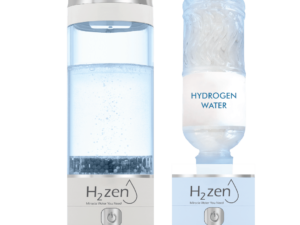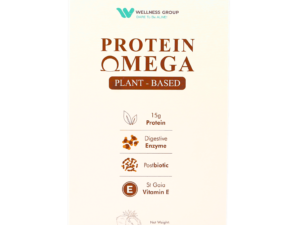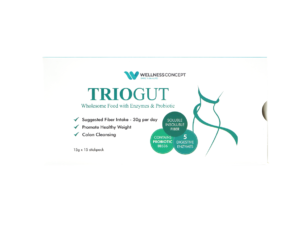What if a simple, vibrant vegetable held a powerful secret to protecting your body from the inside out? This ultimate guide explores how a common root can help combat a hidden cellular challenge.
Within its deep red flesh, this vegetable contains a remarkable array of phytochemicals. Compounds like ascorbic acid, carotenoids, and unique betalains give it significant capabilities. Scientific research highlights its high antioxidant and anti-inflammatory potential.
This article dives into the science, translating complex studies into practical knowledge. It examines how these natural compounds work together to support the body’s defenses. The information presented is backed by numerous clinical investigations available on platforms like Google Scholar.
For personalized guidance on incorporating this functional food into a wellness routine, readers in Malaysia can contact Wellness Group at +60123822655. This resource offers evidence-based approaches tailored to individual health needs.
Key Takeaways
- Beetroot is packed with powerful phytochemicals that act as antioxidants.
- Oxidative stress is linked to cellular damage and various health concerns.
- Scientific research supports the role of this vegetable in enhancing the body’s natural defenses.
- Its unique compounds, including betalains, work synergistically for maximum benefit.
- This guide provides accessible, evidence-based information for health-conscious individuals.
- Peer-reviewed studies on Google Scholar form the foundation of this article’s credibility.
- Expert guidance is available in Malaysia for those seeking to integrate this food into their diet.
Introduction to Beetroot and Oxidative Stress
Modern nutritional science has shed new light on the humble root vegetable known scientifically as Beta vulgaris. It has emerged as a recognized functional food with significant health-promoting properties.
A key area of research involves its role in combating a cellular state called oxidative stress. This occurs when an imbalance between free radicals and the body’s antioxidants leads to damage.
The vibrant red color of this food is a visual clue to its rich betalain content. These compounds are crucial for its potent antioxidant activity. A study available on Google Scholar often highlights this connection.
This vegetable can be consumed fresh, juiced, or as a supplement. Each form helps enhance the body’s capacity to manage oxidative challenges. This offers a natural approach to supporting wellness.
| Nutrient | Amount | Nutrient | Amount |
|---|---|---|---|
| Proteins | 1.68 g | Carbohydrates | 9.96 g |
| Fat | 0.18 g | Dietary Fiber | 2 g |
| Amino Acids | 1.216 g | Minerals | 0.483 g |
| Vitamins | 4.805 mg | Nitrate | 25 mg |
Defining Oxidative Stress and Its Biological Impact
The human body maintains a sophisticated defense system against invisible molecular threats. This balance becomes crucial when reactive oxygen species (ROS) production increases during physical activity.
These molecules play dual roles in cellular function. At controlled levels, they help with immune responses and cell signaling. However, excessive amounts can overwhelm natural defenses.
Mechanisms of Free Radical Damage
Free radicals attack vital cellular components with significant consequences. They can fragment proteins and damage essential amino acids. This interference disrupts normal cellular activity and metabolic processes.
Research on Google Scholar shows how mitochondrial function particularly suffers. The energy-producing cells become vulnerable during high metabolic activity. This can lead to muscular fatigue and performance issues.
Impact on Cellular Health
The effects extend throughout various cells and tissues. DNA damage represents one of the most serious concerns. Mutations and strand breaks compromise genetic integrity.
Chronic oxidative stress triggers inflammatory responses as the body attempts repair. This inflammation can create cycles of additional damage. Maintaining proper antioxidant levels helps protect each cell from cumulative harm.
Understanding these mechanisms highlights why dietary support matters. The right nutritional approach can strengthen cellular defenses against molecular threats.
Beetroot's Nutritional Profile and Health Benefits
The deep crimson hue of red beetroot signals more than just visual appeal—it reveals a powerhouse of nutritional compounds. This vibrant food delivers an impressive array of vitamins, minerals, and unique phytochemicals in every serving.
According to USDA data, this root vegetable provides carbohydrates for energy and dietary fiber for digestive health. It contains essential minerals like potassium and iron. The protein content includes all essential amino acids, making it valuable for plant-based diets.
The standout feature is the remarkable concentration of betalains. These pigments give the vegetable its distinctive color and provide powerful antioxidant protection. Research on Google Scholar confirms their effectiveness against cellular damage.
Nitrate content is particularly noteworthy. The body converts dietary nitrates into nitric oxide, supporting cardiovascular function and blood flow. This makes red beetroot beneficial for heart health.
Fresh beetroot juice offers a convenient, concentrated source of these compounds. Whether consumed as whole food, juice, or extract, this vegetable consistently delivers significant nutritional value. The synergy between its components provides comprehensive health benefits.
Beetroot on Avert Oxidative Stress
At the heart of this vegetable’s defense mechanism is a group of potent pigments that directly combat cellular threats. The primary actors are betalains, especially betanin, which function as powerful antioxidants. Their main job is to neutralize harmful free radicals before they can damage cells.
These compounds are remarkably effective scavengers. Research shows they can intercept dangerous molecules like hydroxyl radicals and superoxide. This action helps prevent problems like DNA damage and the oxidation of LDL cholesterol.
One key advantage is their stability. Betalains survive the digestive process with their antioxidant power largely intact. This ensures they reach target tissues ready to work. The effect is a reliable delivery of protection.
The benefits extend beyond simple scavenging. This food also influences cellular signaling. It can help suppress the activation of the NF-κB pathway, a key driver of inflammation that worsens oxidative damage. This dual-action approach makes it a comprehensive shield.
Numerous studies on Google Scholar confirm that regular consumption lowers markers of cellular stress. For those in Malaysia looking to harness these benefits, Wellness Group offers expert advice on effective intake strategies, including how to leverage its high iron content.
Investigating Betalains, Nitrates, and Antioxidant Activity
Scientists have identified specific molecular structures within Beta vulgaris that explain its remarkable protective properties. The plant contains three powerful components that work together to create its strong antioxidant activity.
Key Components from Beta Vulgaris
Betalains represent a unique class of nitrogen-containing pigments found almost exclusively in this root vegetable. Their molecular structure includes phenolic hydroxy groups and rich unsaturated bonds. These features allow them to readily donate electrons to neutralize free radicals.
The nitrate content in Beta vulgaris serves a dual purpose in cellular protection. It contributes directly to antioxidant activity while also serving as a precursor for nitric oxide production. This combination enhances the vegetable’s overall protective effects.
Research available on Google Scholar shows that different concentration levels of beetroot extract produce dose-dependent results. Higher concentration typically correlates with stronger antioxidant activity. The extraction method significantly influences the final product’s effectiveness.
Phenolic compounds like caffeic acid and rutin work synergistically with betalains. This combination makes Beta vulgaris particularly effective against various free radicals. Understanding these mechanisms helps optimize supplementation strategies for maximum benefit.
Scientific Research and Clinical Studies Overview
The scientific community has developed multiple approaches to understand how dietary compounds influence cellular health. These methods provide complementary evidence about protective mechanisms.
Laboratory research often begins with cell culture study designs. These experiments allow precise control over compound concentration levels. Researchers can observe direct effects on specific cells without other factors interfering.
Key Study Findings
Animal models provide crucial data about systemic responses. Scientists induce oxidative challenges using controlled substances. Then they measure how different treatment protocols affect recovery.
Human trials represent the most relevant study type for practical applications. These investigations track biomarker changes over time. The results help establish effective dosage ranges.
Methodological Insights
Researchers test various preparation methods to find optimal forms. Fresh, cooked, and processed versions show different compound levels. This data informs best consumption practices.
Advanced biomarkers provide detailed results about molecular protection. Measurements include enzyme activities and oxidative damage markers. These sophisticated methods yield reliable study outcomes.
Publications on Google Scholar demonstrate evolving methodological rigor. Proper controls and statistical analysis ensure valid research conclusions. This strengthens the evidence supporting dietary approaches.
The Role of Beta Vulgaris in Reducing DNA Damage
The protection of DNA from molecular threats stands as one of nutrition’s most critical functions in maintaining long-term wellness. Beta vulgaris demonstrates remarkable protective effects against genetic damage through multiple complementary mechanisms.
Research shows that betanin, a key compound in this vegetable, acts as both a free radical scavenger and an inducer of antioxidant defense mechanisms in cultured cells. It neutralizes dangerous molecules before they can attack DNA strands.
Beyond simple scavenging activity, Beta vulgaris activates cellular defense pathways. The transactivation of Nrf2 results in increased production of protective proteins like glutathione and heme oxygenase-1.
Animal study models have demonstrated significant reductions in DNA damage with pretreatment. This protective effect appears dose-dependent, offering greater protection at optimal concentrations.
Publications on Google Scholar document measurable reductions in sophisticated damage markers. For individuals concerned about environmental toxins, this food-based strategy enhances cellular integrity.
Enhancing Blood Flow and Nitric Oxide Production with Beetroot
When it comes to supporting healthy circulation, few natural foods demonstrate such direct physiological impact as nitrate-rich vegetables. The body converts dietary nitrate into nitric oxide, a powerful molecule that relaxes blood vessels throughout the system.
This conversion process creates a natural vasodilation effect, significantly improving blood flow to muscles and organs. Research shows this enhanced circulation delivers more oxygen and nutrients to tissues when they need it most.
Impact on Exercise Performance
Athletes and active individuals benefit tremendously from this vascular support. The improved blood flow allows working muscles to receive optimal oxygen delivery during physical exertion.
Multiple study findings on Google Scholar confirm that supplementation with concentrated juice can enhance endurance across various activities. From running to cycling, participants experience measurable performance improvements.
The timing of consumption matters significantly. Peak nitric oxide levels typically occur 2-3 hours after drinking nitrate-rich juice. This strategic approach maximizes the vascular benefits during exercise sessions.
Both acute and chronic supplementation strategies show positive results. The consistent effect on blood flow makes this approach valuable for regular training routines. Current study data continues to support these findings.
Beetroot Supplementation: Dosage, Efficacy, and Outcomes
The processing method used to create different supplement forms plays a crucial role in preserving nutritional value. Different preparation techniques significantly influence the final product’s antioxidant capacity and bioavailability.
Optimal Intake Guidelines
Consumers can choose from various supplement options, each with distinct benefits. Fresh juice delivers the most complete nutritional profile but requires refrigeration. Freeze-dried powder offers excellent convenience while preserving beneficial compounds.
Concentrated extract provides high levels of active ingredients in small volumes. Capsules ensure standardized dosing and portability. The choice depends on individual preferences and health goals.
Comparative Supplement Forms
Research shows that processing methods dramatically affect compound preservation. Fresh, dried, and pureed preparations maintain the highest antioxidant capacity. Extensive boiling or pickling may reduce beneficial compound levels.
Studies on Google Scholar indicate that drying temperature critically influences heat-sensitive compounds. Freezing with liquid nitrogen increases phenolic content significantly. Proper storage conditions ensure maximum efficacy.
The ideal supplement form balances convenience with compound concentration. Minimally processed options typically offer the most comprehensive benefits for regular food intake.
Impact of Beetroot on Gene Expression and Cellular Function
Molecular biology reveals how this root vegetable’s compounds influence cellular programming. They don’t just fight damage. They instruct cells to become more resilient.
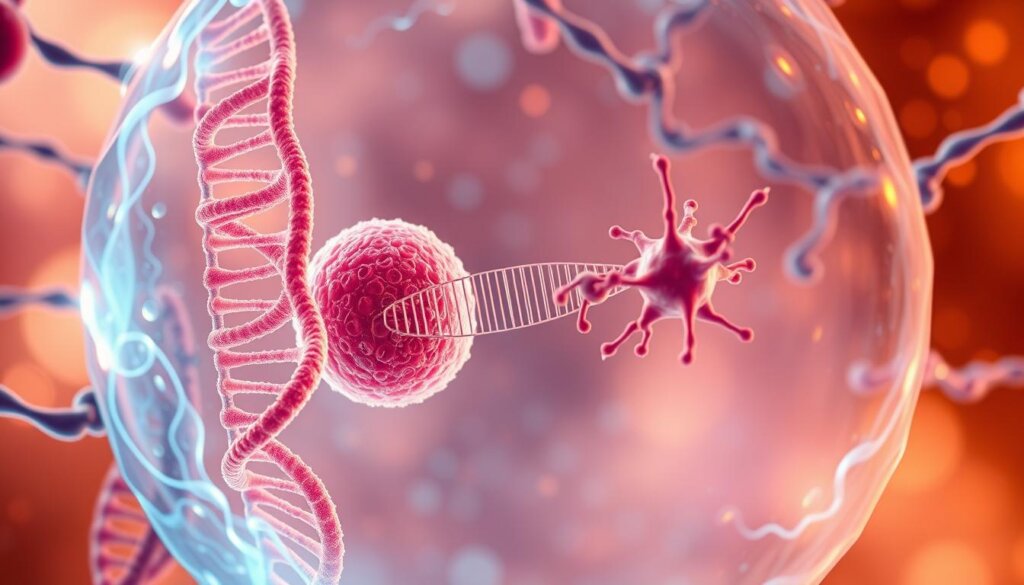
Gene expression is the process where a cell reads its DNA to make proteins. Compounds from this vegetable can change which genes are active. This has a profound effect on cellular function.
Research shows it activates the Nrf2 pathway. This is a master switch for antioxidant gene expression. When Nrf2 moves into the cell’s nucleus, it turns on protective genes.
This leads to increased expression of proteins like heme oxygenase-1. These proteins help cells manage oxidative stress. The effect is a stronger internal defense system.
Studies also show it can lower the expression of genes linked to inflammation, like IL-6. It also reduces signals for cell death (Casp-3) and collagen breakdown (MMP-1).
At the same time, it supports collagen production by increasing COL1A1 gene expression. This data, available on Google Scholar, shows how it reprograms cells for better health and reduced inflammation.
Evaluating Free Radicals, Lipid Peroxidation, and Antioxidant Effects
The destructive chain reaction known as lipid peroxidation represents a critical battleground in the fight against cellular deterioration. It begins when free radicals attack the fatty layers of cell membranes.
This process creates a cascade of damage, compromising the integrity of cells. Communication and nutrient transport suffer, making this a prime target for intervention.
Research consistently shows that the antioxidant effects of this root vegetable can significantly lower markers of this damage. In animal studies, pretreatment led to a dramatic 38% reduction in microsomal lipid peroxidation.
Pretreatment with the juice caused a threefold increase in the activity of superoxide dismutase, a key endogenous defender.
The protective effects extend to blood lipids. Compounds like betanin help reduce the oxidation of LDL cholesterol, which is significant for cardiovascular wellness.
This approach is preventive. It neutralizes free radicals before they can initiate harm. Studies on Google Scholar confirm these findings across various models of damage.
By evaluating multiple biomarkers, a clear picture emerges. The vegetable’s compounds provide measurable protection for cells and systems against oxidative challenges.
Integrating Beetroot into a Healthy Diet: Practical Tips
Simple culinary techniques can transform this nutritious food into delicious everyday dishes. Many people find creative ways to enjoy its health benefits without complicated preparation.
Raw slices add crunch to salads. Roasting brings out natural sweetness. Both methods preserve valuable nutrients.
| Preparation Method | Key Benefits | Best Uses |
|---|---|---|
| Raw in Salads | Preserves heat-sensitive nutrients | Fresh vegetable dishes |
| Roasted | Enhances natural sweetness | Side dishes, grain bowls |
| Juiced | Highly concentrated nutrients | Smoothies, health drinks |
| Steamed | Retains color and texture | Soups, vegetable medleys |
For those new to this food, start with small amounts. Gradually increase consumption as taste preferences adjust. Combining it with citrus or ginger improves flavor.
Meal prepping makes regular intake easier. Roast several portions at once for weekly use. This supports consistent dietary habits.
Resources on Google Scholar offer evidence-based guidance. For personalized dietary planning in Malaysia, contact Wellness Group at +60123822655 during business hours.
Beetroot in Athletic Performance and Exercise Recovery
For athletes seeking a natural edge, this vibrant root offers remarkable benefits for both performance and recovery. Research shows it helps the body work smarter during physical exertion.
A key finding involves VO2max, the maximum amount of oxygen the body can use. Studies confirm that supplementation leads to a significant increase in this critical fitness measure.
Enhancing VO2max and Reducing Muscle Damage
The improvement in VO2max is linked to better efficiency. The body performs the same work with less oxygen consumption. This change allows athletes to push harder for longer.
These positive changes are connected to reduced muscle damage. Specifically, the increase in VO2max is negatively related to changes in serum lactate dehydrogenase activity. This enzyme is a marker of cellular stress.
This means the supplementation results in significantly lower levels of this damage marker after intense workouts. The enhanced blood flow helps clear waste products faster.
The ergogenic effect is documented across many activities. Research on Google Scholar shows benefits in:
- Running and cycling endurance
- Rowing performance
- High-intensity interval training
- Exercise tolerance and delayed fatigue
Athletes report feeling less soreness and recovering more quickly between sessions. Regular juice or supplementation supports sustained training efforts.
Wellness Group: Expert Guidance and Contact Details
Taking the next step toward better health often requires expert guidance. Wellness Group provides accessible consultation services for Malaysian residents. They help individuals apply the research discussed throughout this comprehensive article.
Contact Information
Clients can reach Wellness Group directly at +60123822655. This number serves as the primary contact for scheduling consultations and asking questions. The team welcomes inquiries about implementing strategies from this informative article.
For immediate assistance outside business hours, WhatsApp messages to this number are encouraged. The support team responds promptly when the office reopens. This flexible approach ensures clients receive timely guidance.
Business Hours
Wellness Group maintains consistent availability Monday through Saturday. From Monday to Friday, their team is available from 9:30 am to 6:30 pm. Saturday hours are slightly shorter, running from 10 am to 5 pm.
The organization closes on Sundays to allow staff rest and renewal. This schedule balance ensures quality service while maintaining team wellbeing. Clients can use Sunday to review this valuable article and prepare questions.
When contacting the team, referencing specific sections of this article helps create focused discussions. The research on Google Scholar forms the foundation of their evidence-based approach. This comprehensive article and the studies on Google Scholar provide the scientific background for personalized recommendations.
Future Directions: Emerging Trends in Beetroot Research
Scientific exploration continues to reveal new dimensions of this remarkable root vegetable’s therapeutic potential. Researchers are expanding their investigations beyond established benefits to explore novel applications.

Emerging research focuses on specific health conditions where the vegetable may offer significant benefits. Scientists are examining its potential role in managing metabolic disorders and chronic inflammatory conditions.
Current studies investigate optimal formulations to maximize compound bioavailability. Researchers aim to develop standardized extracts with consistent active compound concentrations. This approach ensures reliable treatment protocols.
Personalized nutrition represents another exciting direction. Another study examines genetic factors influencing individual responses to supplementation. This data helps identify who benefits most from specific interventions.
Advanced techniques allow scientists to examine effects at the molecular level. Research indexed on Google Scholar increasingly maps gene expression changes in various cells. This reveals how the vegetable influences cellular signaling pathways.
Future research will explore synergistic combinations with other plant compounds. Long-term studies will provide crucial data on sustained benefits. As this article demonstrates, the evidence base continues to grow.
The scientific community remains committed to uncovering new applications. Ongoing studies promise to refine our understanding of this functional food’s role in health optimization.
Conclusion
Throughout this detailed examination, one truth has consistently emerged about cellular defense. The evidence clearly supports the remarkable protective capabilities of this vibrant root vegetable against molecular threats.
From enhancing blood flow through nitric oxide production to supporting DNA integrity, the benefits are comprehensive. The unique combination of betalains and other compounds creates a powerful antioxidant shield.
This article has drawn from extensive research available on Google Scholar, confirming the scientific foundation. The versatility of forms—from fresh consumption to strategic supplementation—makes integration accessible.
For personalized guidance on harnessing these protective effects, Malaysian residents can contact Wellness Group at +60123822655. Their team provides evidence-based strategies tailored to individual health goals. Learn more about specific applications through their expert resources.
The journey toward better cellular health begins with informed choices backed by solid science.
FAQ
How does Beta vulgaris help protect cells from damage?
The compounds in red beetroot, particularly betalains, have strong antioxidant activity. They work by neutralizing free radicals, which are unstable molecules that can cause oxidative stress and harm cells. This action helps shield cellular components, including DNA, from potential injury.
Can drinking beet juice improve blood flow?
A> Yes, research indicates that the nitrate found in this vegetable is converted into nitric oxide within the body. Nitric oxide is a molecule that relaxes and widens blood vessels. This process enhances blood flow and can support cardiovascular function, as shown in various studies.
What does scientific evidence say about its effects on exercise?
Clinical studies, including those referenced on Google Scholar, demonstrate that supplementation can positively influence athletic performance. The increase in nitric oxide production improves oxygen efficiency, which may boost stamina and aid in exercise recovery by reducing muscle stress.
Are there specific health benefits linked to its antioxidant properties?
Absolutely. The antioxidants in this food target free radicals, significantly lowering oxidative stress. This reduction is associated with a lower risk of chronic health disease and supports overall cellular function by minimizing inflammation and other damaging effects.
How much should one consume to see positive outcomes?
While the optimal intake can vary, many studies use a concentrated juice or extract equivalent to a moderate daily serving of the whole food. It’s best to consult with a healthcare provider, like the experts at Wellness Group (+60123822655), for personalized guidance based on individual health goals.


